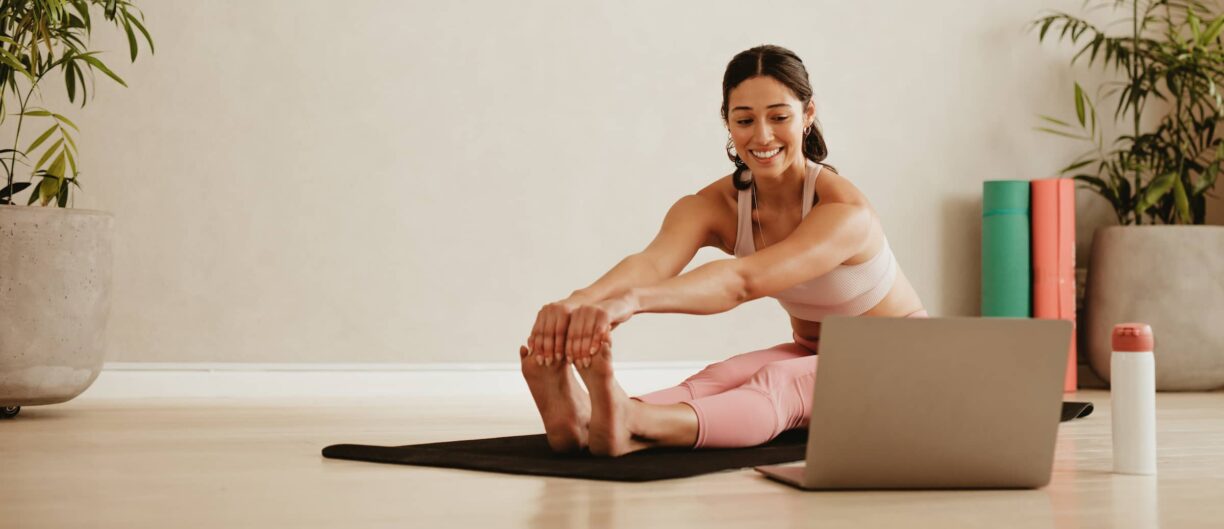When you cannot attend an in-person yoga class, practising yoga at home is the next best thing.
Whether you’re following a pre-recorded vinyasa flow, or signing into Zoom for your Thursday evening yin class, the physical and mental rewards of practising yoga is just as strong when carried out digitally as when in a class full of people.

So, at a time when the population is not able to attend a physical yoga class, let’s celebrate the benefits of practising yoga at home.
1. A Safe Space
Practising yoga is a highly personal and intimate experience. It is during this practice that we often find a connection between body and breath, and are able to turn our gaze inwardly to foster awareness of our thoughts, habits and behaviours.
Creating a comfortable space in which to carry out your practice facilitates a greater disconnection from the external world and a heightened focus on the internal.
It is here that we can return to our centre and better ease into the practice, the ebb and flow of our breath and shifting thoughts.
Practising yoga at home gives you the opportunity to build a setting that matches your preferences and energy, undisturbed by the rustling of another practitioner.
2. Yoga on Your Time
Booking a yoga class, at first glance, appears to be a pretty simple exercise. However, when you factor in picking up the kids, taking the dog for a walk, finishing that task for work, ringing your mum, cooking dinner and doing the shopping, it can become a mammoth undertaking.
The problem is, studio opening hours don’t always fit with your schedule.
This is where practising yoga from home can be highly advantageous. Not having to abide by a studio schedule or teacher availability, you can log in to an online class when it suits you (ideally when the kids are in bed, mother called and dinner is ready to eat).
Working on your own time prevents the sudden mid-class panic that you need to do the washing, or rushing around to arrive to class on time.
3. Your Way or the Highway
Try as we might, when you’re in a physical class, it is hard not to compare yourself with the impossibly flexible, effortlessly graceful student to your left.
Practising yoga at home there is no one to judge yourself against or attempt to imitate.
In doing so at-home yoga can foster greater self-awareness and an understanding of how our body feels without the internal pressure to match the teacher’s instructions.
This, in turn, allows you to test what feels most comfortable, challenge yourself or hold off from anything that feels too strenuous on a given day.
4. But First… Find the Right Yoga Teacher
Practising yoga at home enables you to access those feelings of peace and calm so often associated with the yoga studio.
Gentle daily movement and mindfulness exercises hold a wealth of benefits for both our physical and mental wellbeing when carried out correctly.
For this, you do need a knowledgeable and experienced yoga teacher to guide you through your practice – albeit through a computer screen.
In a virtual world full of instructors offering up sequences left right and centre, it is worthwhile checking your e-teacher’s training, qualifications and teaching experience.
While it may not seem necessary given the online setting, it is only through relevant training and in-class experience that teachers can safely conduct virtual classes, allowing you to reap the rewards of a studio session from the comfort of your own bedroom.
Looking for an online class? Find a Yoga Teacher Here





